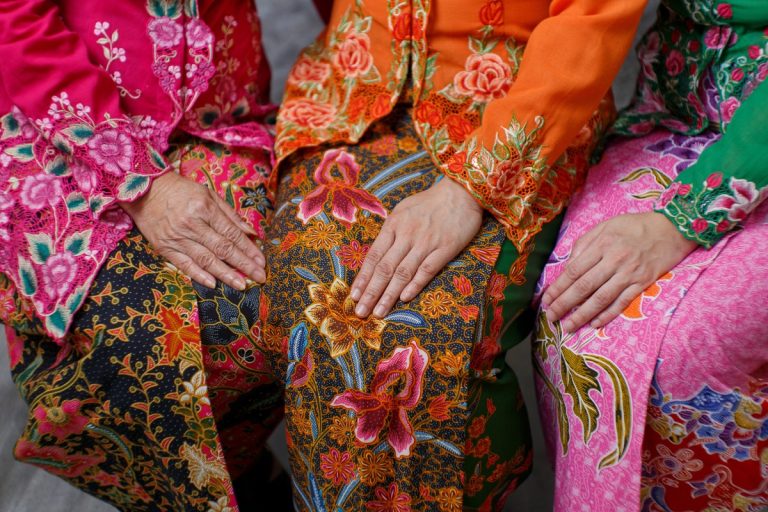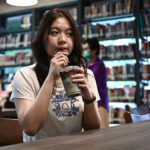
Mohd Bakeri Ab. Rahman has one trump card in his collection at this week’s Asian Islamic Fashion Week – it is made by prisoners.
The lecturer cum artist from the Kelantan state campus of Malaysia’s MARA Technological University (UiTM) is showcasing his varsity’s prison-made “Arabesque” batik collection at the Kuala Lumpur Convention Centre. Batik is a type of textile made using a technique unique to the Southeast Asian region, and best known for being the shirt pattern of choice for Indonesia’s current premier, President Joko Widodo.
But Mohd Bakeri’s Malaysian batik on display is different from that found in the neighbouring country – from its production method up to its motifs, his batik is inspired by the Islamic architecture from the country’s East Coast (where Kelantan lies) as well as those of the Middle East.

The Arabesque line.
That’s not all. While other fashion houses send their designs to factories locally or in China, the designs by UiTM’s students and lecturers are given to three local prisons, where inmates work with the university to come up with the final product.
“We are spreading our expertise, in collaboration with the business faculty,” Mohd Bakeri said.
“While they lack design knowledge, prisons have an edge in terms of production.”
Inmates’ circumstances influence the work they produce.
One silver lining from their physical incarceration is they have a level of focus unrivalled by other factories or production houses. And because batik, like all other garments, requires a high level of detail and patience, dripping wax and dyeing cloths bring other benefits to the prisoners – it is seen as “art as a form of therapy” and also connects them to a community they have been closed off from.
“Their passion shows,” Mohd Bakeri says of the end result, which he hopes to sell to the international market at this fashion week as well as the Kuala Lumpur Fashion Week in July.

Mohd Bakeri and his students discuss their collection with a visitor.
Islamic fashion is worth an estimated US$266 billion in the global market, and it is expected to grow to US$488 billion by 2019. As the market expands and becomes more mainstream, Muslim wear designers have to compete with fashion giants like Nike and Uniqlo, while staying true to Islam’s tenets. This could limit their creative boundaries. In a country like Malaysia and its shaky stance on religion, the confines grow narrower still.
But Mohd Bakeri is confident the project by his faculty will be able to penetrate the global Islamic fashion market. By focusing only on textiles instead of diving straight into making ready-made Islamic clothing, they aim to market it as a versatile product that could be made into any type of wear, Muslim or otherwise.
“They are more versatile and can be used for any function,” Mohd Bakeri says.
Business student Faiz Imran believes the strategy is sound if Malaysia wants to make an impact on a global scale, judging by the success of a local designer’s Swarovski crystal-encrusted headscarf at the recent Miss Universe contest.
The Malaysian delegate had gifted the headscarves to other delegates, who put their own spin to the traditional headwear.
https://www.instagram.com/p/BP2eYpGlTiH/
Faiz says this shows Muslim wear can now be marketed to a non-Muslim crowd as well.
“The scarf can be made to be more than a tudung (Muslim veil) … With one design, it can have many different purposes,” Faiz said.
“Islamic fashion has evolved since 10 years ago. It is different now. ”
Liked this? Then you’ll love these…
In Tweets: Fashion students show flair at London Fashion Week







